Toyota Highlander Vs Toyota RAV4 Comparison: Which Crossover Is Right For You?

Despite the same basic platform, the Toyota Highlander and RAV4 have two distinct personalities.
There is no dearth of options in the Toyota crossover lineup but the Highlander and RAV4 are by far the most popular and sought after. We’ve harked on about this on numerous occasions but the RAV4 being the bestselling crossover in the North American market cements its position as the industry top dog. Plus, considering that it is available with gas, hybrid and now, as a plug-in as well, it’s not surprising that the RAV4 nameplate is the top seller in the segment.
Get a Quote on a New Toyota Highlander or RAV4Then there is the Highlander. Another household name when it comes to family crossovers. No surprises then that Toyota has kicked it up a notch with its seven-seater three-row crossover. The current one is a complete overhaul from the previous generation, even the platform that underpins it is completely different. If you want a Japanese family crossover, the Toyota Highlander and the RAV4 are bound to be on your list. But which do you choose? Does one make more sense than the other? Well, let’s find out.
*The Toyota RAV4 Prime has been left out of this comparison as the Highlander doesn’t have a comparable trim.Interior and Cargo Space
RAV4: With a 105.9-inch wheelbase, the RAV4 manages to offer 41.0 and 37.8 inches of legroom in the front and rear. The headroom too stands at a respectable 37.7 inches in the front and 39.5 inches in the rear. Despite the seemingly low headroom in the front, the standard height-adjustable driver’s perch ensures there is never a dearth of headroom for the driver.
At the rear, it offers 56.4 inches (1,432 mm) of shoulder room which is ample to seat three adults abreast but only just. As for the cargo area, the RAV4’s trunk can swallow 37.6 cu-ft (1,064 liters) of luggage without a hitch. Fold the rear and the luggage capacity expands to 69.8 cu-ft (1,976 liters).
Highlander: Being considerably bigger, the Highlander offers more overall space compared to the RAV4. But the RAV4 manages to offer marginally more headroom in the second row, provided the Highlander is equipped with the moonroof. With the smaller moonroof, the Highlander offers 39.4 inches (1000 mm) of max headroom. But with the panoramic glass roof (platinum trim only), the figure drops to 37.1 inches (942 mm).
SEE ALSO: Mazda CX-9 vs Toyota Highlander ComparisonThe shoulder room, at 59 inches (1,498 mm) in the front and second-row will prove to be aplenty. The third row, however, at 55 inches (1,397 mm) is considerably narrower. It offers 40.4 inches (1,026 mm) of legroom in the front which is 0.6 inches less compared to the RAV4. The rear legroom though at 41.0 inches (1,041 mm) is considerably more than the RAV4.
The cargo capacity of 48 cu-ft behind the second row is considerably more than the RAV4. Behind the third row, it can swallow 16 cu-ft of luggage while folding the rear rows increases the capacity to 84.3 cu-ft.
Bottom Line: In terms of sheer size, the Highlander has the RAV4 beat but despite the smaller size, the RAV4 offers better second-row headroom and front legroom. So unless you absolutely need the three rows, the RAV4 comes across as the ideal crossover for a small family, cabin space-wise at least.
Technology and Features
RAV4: Barring the top tier Platinum trim of the Highlander, the RAV4 and its bigger sibling are similarly specced. You get LED headlamps as standard but auto-leveling is available XLE trim onwards only. Heated wing mirrors with blind-spot indicators are part of the standard package as well. Single-zone climate control is the only one available on the base LE trim. For the dual-zone system, you need to upgrade to XLE. In the Canadian market, however, the dual-zone climate control system is part of the standard package. Tri-zone climate control is also available but only on the top trims.
As for the instrument cluster, the lower rungs of the lineup make do with an analog setup accompanied by a 4.2-inch MID screen. The seven-inch digital-analog setup is reserved for the XSE and Limited trims only. A few quirks include power adjustment only available on the driver’s perch and heated seats are only available XLE onwards while ventilated seats are reserved for the Adventure TRD and Limited trims.
SEE ALSO: 2020 Toyota Highlander First Drive ReviewA seven-inch infotainment with Toyota’s Entune program is available on the lower trims. Available with a six-speaker system, it offers Apple CarPlay and Android Auto as standard. The upper strata of trims is available with an 8.0-inch system which only differs in screen size. In-built navigation with the 11-speaker JBL sound system is only available as standard on the Limited trim. The combo is also available as an add-on package on the lower trims for $1,620.
In terms of safety, Toyota offers its Safety Sense 2.0 package as standard across the entire range. It features a pre-collision system with pedestrian detection, radar-guided cruise control, and lane departure alert with steering assist among others. Blind-spot monitoring with rear cross-traffic alert however is optional on the LE trim and standard kit XLE onwards.
Highlander: You would be right to expect the Highlander to be considerably better specced but that is only partly true. While the Highlander offers exclusive features like a new 12.3-inch wide infotainment screen, 10-inch HUD, and a full panoramic moonroof, all features are available on the top Platinum trim only. The Highlander also offers a 10-way power-adjustable heated and cooled front seats and heated rear captain seats. While the 10-way power adjustment for the driver’s and 4-way adjustment for the passenger’s perches are available XLE onwards, ventilated front seats and heated rear captain chairs are available on the Platinum trim only.
The lower trims, including the new XSE, come with the same 8.0-inch Entune infotainment system that is a part of the higher trims in the RAV4 lineup. The systems are identical save for one difference, in-built navigation is available as an optional extra only. It comes as standard only with the 12.3-inch screen. Also, like the RAV4, you will find Toyota’s Safety Sense 2.0 as standard here as well. The standard package includes the usual stuff but blind-spot detection with rear cross-traffic alert is available LE trim onwards only.
SEE ALSO: 2021 Toyota RAV4 Prime First Drive Review: Plug-In PowerBottom Line: Barring the HUD and the panoramic moonroof, both the RAV4 and the Highlander are pretty evenly matched. Yes, the 12.3-inch screen is significantly bigger but the system is the same. In addition, the 11-speaker JBL system is available on both the RAV4 and the Highlander.
Powertrain and Fuel Economy
RAV4: The RAV4 is available both with gas and hybrid powertrain. In fact, the hybrid powertrian is actually common between the Highlander and the RAV4. The gas-powered version makes use of a 2.5-liter four-pot motor making 203 hp and 189 lb-ft of torque. It comes with an eight-speed automatic transmission which primarily drives the front wheels. While an AWD system is available on all trims, it is an on-demand system that only supplies power to the rear axle only when absolutely necessary.
The hybrid system too employs a 2.5-liter engine hooked up to a single motor- lithium-ion battery setup. Net power output for the system stands at 219 hp, 16 hp more than the gas-powered crossover, the torque output is higher too. Plus, all hybrid models come with AWD as standard.
Strangely, Toyota lists different fuel economy figures for different gas models, the hybrid models however return 41 mpg in the city 38 mpg out on the highway and 40 mpg overall. The FWD LE trim returns 27 mpg (8.8 L/100km) in the city and 35 mpg (6.8 L/100km) on the highway. The efficiency drops by 1 mpg for AWD models on the highway. Off-road focused models like TRD Off-road and Adventure return 25 mpg (9.5 L/100km) in the city but the Adventure manages one more mile per gallon on the highway at 33 (7.4 L/100km). The Limited FWD offers the same fuel economy as the Adventure.
Highlander: A considerably bigger crossover requires a considerably larger engine, That’s why the Highlander employs Toyota’s tried and tested 3.5-liter V6 making 295 hp and 263 lb-ft of peak torque. Just like the RAV4, the Highlander too comes with an eight-speed automatic gearbox. Also like the RAV4, its larger sibling too is available with both FWD and an on-demand AWD system.
Apart from a similar gearbox, the Highlander also shares its hybrid powertrain with the RAV4 as well. Given the estra heft, the 2.5-liter Atkinson hybrid powertrain makes 243 hp in the Highlander and comes with AWD only. The wheels are driven via an E-CVT gearbox.
As for the fuel economy, the gas-powered FWD versions return 21 mpg (11.9 L/100km) in the city and 29 mpg (8.3 L/100km) on the highway for an overall figure of 24 mpg (10.3L/100km). The AWD versions return a slightly lower 20 (11.8 L/100km), 27 (8.6L/100km) and 23 mpg (10.3 L/100km) for city, highway and overall respectively. Also, unsurprisingly, hybrid is a lot more efficient returning 35 mpg overall.
SEE ALSO: 2020 Toyota RAV4 Hybrid Review: The Dependable OneBottom Line: It’s unsurprising that the Highlander is less frugal than the RAV4. But even then, it is quite efficient given the size of its powertrain. Also, as far as hybrids go, while, the RAV4 is 6mpg more efficient than the Highlander, but even then a figure of 35 mpg is nothing to scoff at.
Styling
RAV4: Both cars do look like siblings and its easy to see the mother DNA. The RAV4 features an edgy and sharp design. The angles headlamps coupled with that trapezoidal grille and squared off wheel arches give the crossover an aggressive stance. The edginess and sharp lines carry over to the rear of the car. The sleek taillamps and the high-set rear window give it a sporty and muscular stance and make the RAV4 seem a bit wider than it is.
Highlander: The larger of the two crossovers sports an even more striking design than the RAV4, and if you want something sportier still (aesthetics only), the XSE fits the bill quite well. But in fairness, to my eyes at least, the Highlander does seem like a bigger version of the RAV4. The frowning headlamps and the sleek taillamps coupled with the high-set rear window is very RAV4 while the body base line that merges into the flair of the rear wheel arches is quite Supra-esque (though also Sienna-ish). While calling it sleek would be incorrect but flamboyant fits the Highlander’s styling perfectly.
Bottom Line: While far from being design masterpieces, both the Highlander and the RAV4 look striking enough to stand out in the crowded crossover market. Though as a personal preference, I prefer the design of the RAV4 to the Highlander’s.
Pricing
RAV4: Prices for the five-seater crossover start from $27,325 (including destination) for the base LE FWD. Though LED headlamps are standard, inside you get fabric upholstered seats and a seven-inch Entune infotainment system with Android Auto and Apple CarPlay as standard. Next up are the XLE and XLE Premium trims which start from $28,620 and $31,325 respectively. All trims except the Adventure and TRD Off-Road are available as hybrids as well and are $2,500 over the gas-powered trims. To upgrade to AWD from FWD, you need to pay $1,400 extra.
The XSE on the RAV4 is only available as a hybrid and is priced from $35,775. Also, all hybrids come with AWD as standard. Moving further up the ladder, Limited is the top trim and starts from $35,855 for the FWD model. Adventure and TRD Off-Road are the only gas-powered trims available with AWD as standard and start from $34,430 and $37,055 respectively. One thing worth noting though is that premium features like built-in navigation and the 11-speaker JBL system are only available as standard on the Limited trim. But they are available as part of optional packages on other trims as well. The panoramic moonroof though is an optional extra and is only available with the XSE Hybrid and Limited trims and costs $3,135 extra.
Highlander: Pricing for the Highlander starts from $36,085 for the base L FWD trim. All trims are available with AWD which costs $1,600 over the FWD price. The Highlander tops out at $49,640 for the Platinum AWD (Gas) and comes with all bells and whistles including the 12.3-inch touchscreen infotainment system and the panoramic moonroof.
All trims except L and XSE ($42,680) are available as hybrids as well. Pricing starts from $39,685 for the LE FWD which is the base trim for the hybrid. All hybrid trims are $1,400 more than the gas versions and upgrading to AWD costs 1,600 just like the gas-powered trims. Unsurprisingly, the Platinum Hybrid AWD is the true top trim of the Highlander lineup and is priced at $50,415 (including destination).
Bottom Line: The Highlander lineup offers no options for the off-road enthusiast while the RAV4 lineup is bereft with gas, hybrid and off-road options. But if you want a hybrid Toyota crossover with FWD, then only the Highlander can accommodate you.
Verdict: Toyota Highlander vs Toyota RAV4
Despite being siblings, both the Toyota Highlander and the RAV4 have their distinct personalities and also both offer features that the other doesn’t. As we said before, if you want a FWD hybrid Toyota crossover, the Highlander would be the pick between the two. But if you’re looking for something that’s adept at going off the beaten path and isn’t a body-on-frame vehicle then the RAV4 should fit the bill quite well.
One point worth noting here though is that if you’re in the market for a daily runabout Toyota crossover, the Limited trim on the RAV4 and the base Highlander are only $230 apart and it really comes down to the preference if you want a five-seater with all bells and whistles or do you really crave that extra row in the rear.

More by Kshitij Sharma



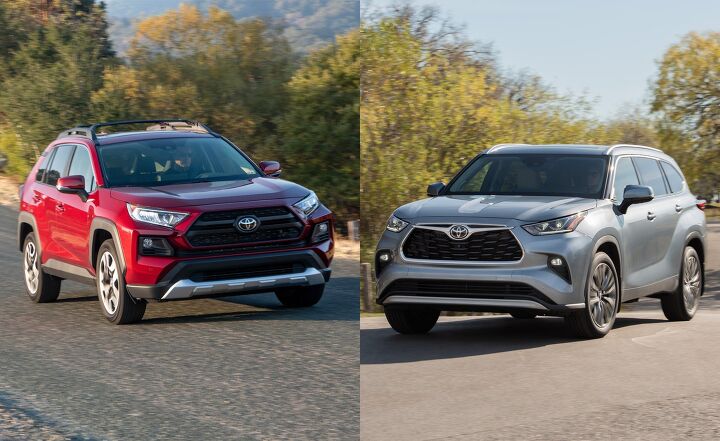


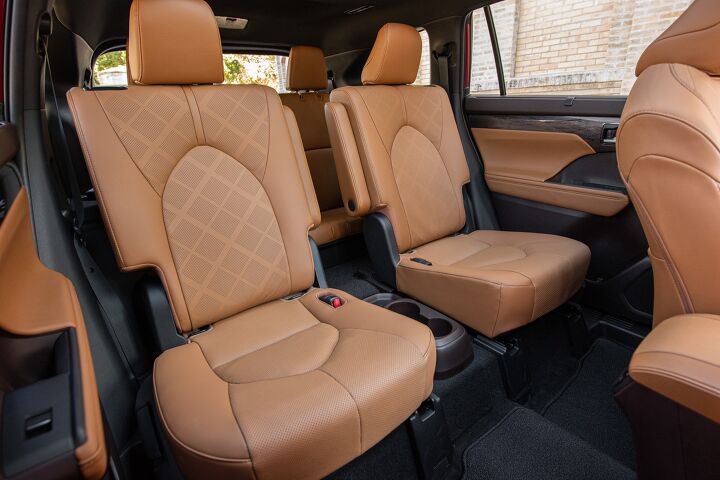





























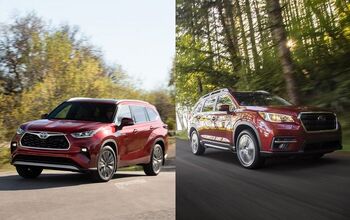
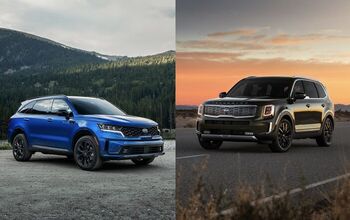
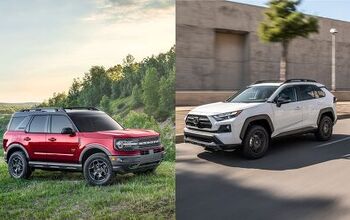
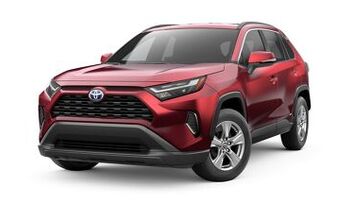
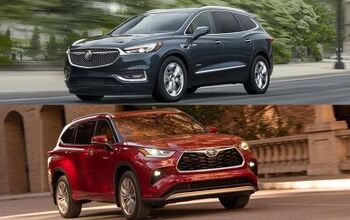
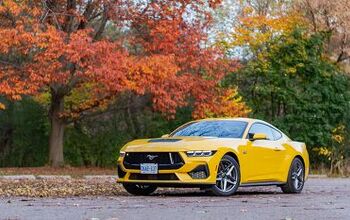





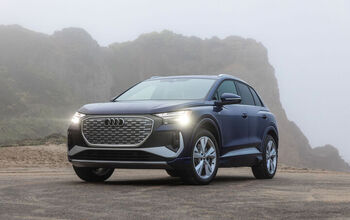

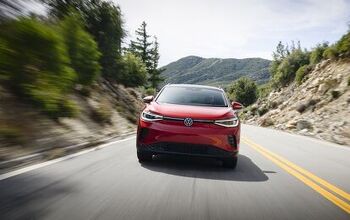
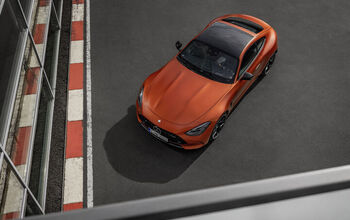
Comments
Join the conversation